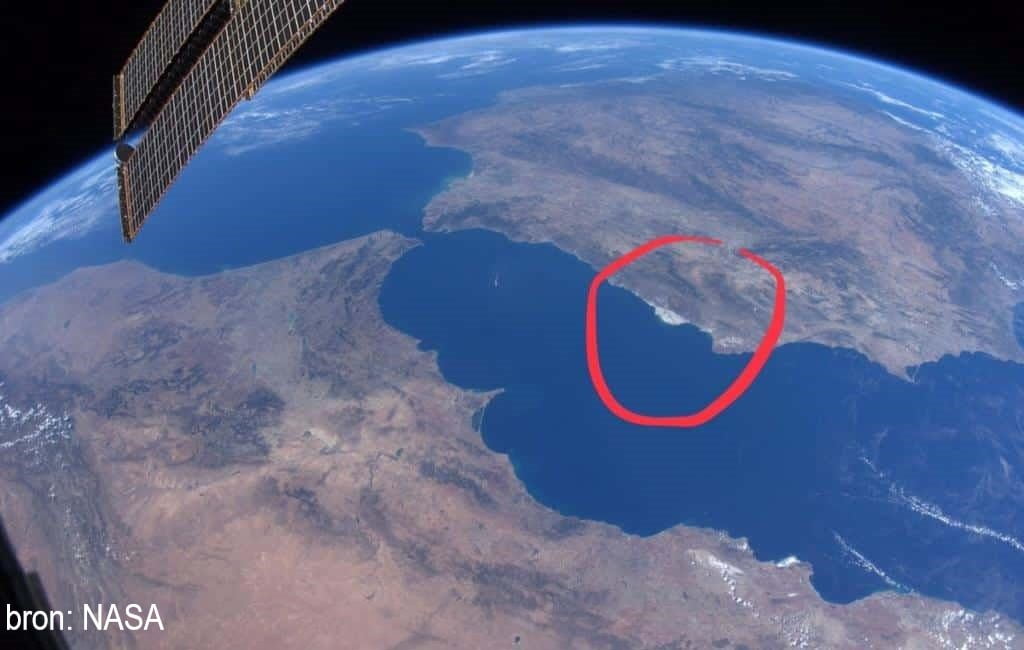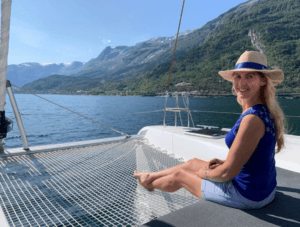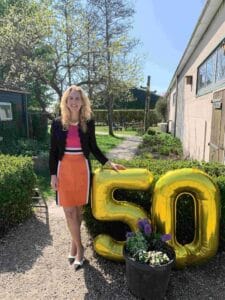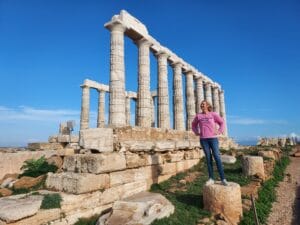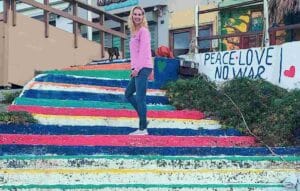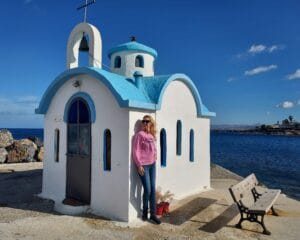After a great trip by car through the Sierra Nevada, watching the snowy mountains, we continued sailing along the Southeast coast of Spain:
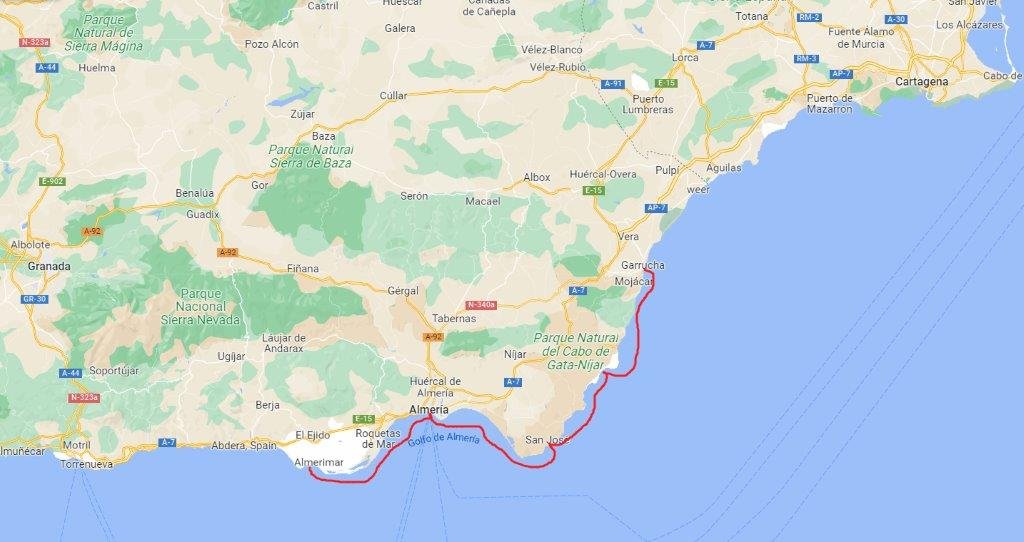
This part of Spain is interesting, there is the stunning backdrop of high mountains along the coastline, some with snow. And then the villages below have 320 days of sunshine each year. You can see palmtrees and orangetrees everywhere along the boulevards! In the city of Almería, we found out that this city never experienced a temperature below 0 degrees in it’s history! It’s very sunny and dry here (desert climate).


At anchor or in a marina?
And since the weather is so stable (sunny, constant wind from the West), we chose to anchor a few times. We never expected to do that in January! But here is Spain, you have many bays and beaches, where anchoring is well sheltered and beautiful in the middle of nature:
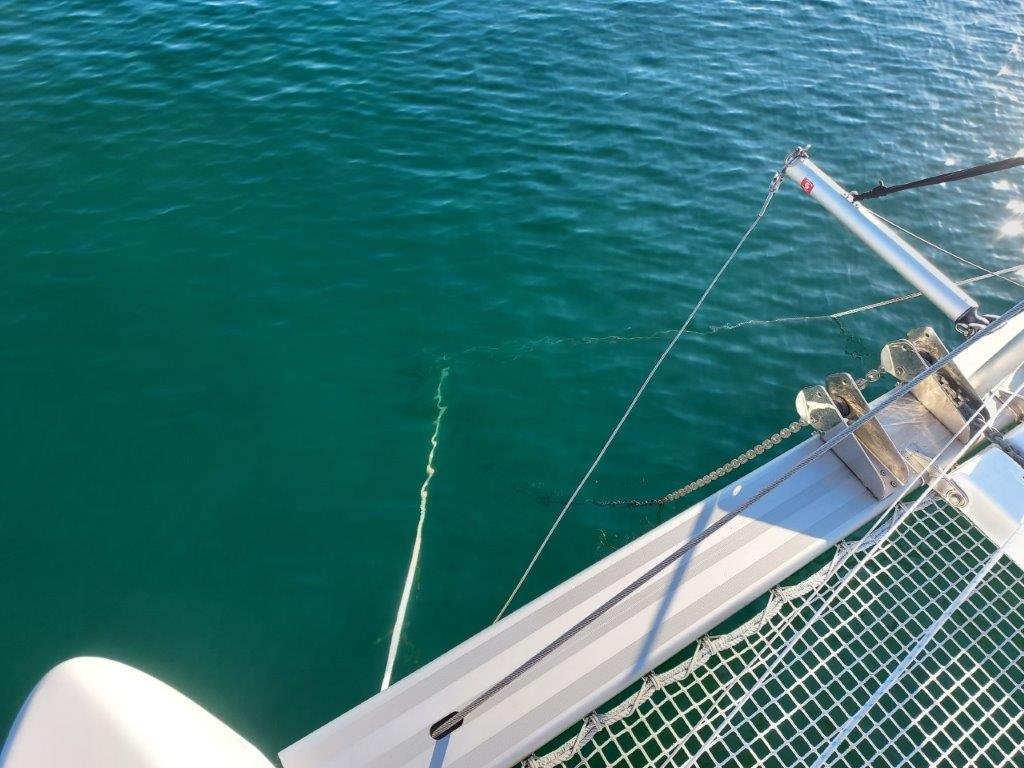

Since we started sailing on the 1. Mai 2021, we have anchored 30% of the time and stayed in a marina 70% of the times. This ‘low’ percentage of anchoring has to do with the fact that in Norway the fjords were very deep (200 meters or more!) and in England the tides were extreme (differences of 8 meters every 6 hours!). But here in the Mediterranean Sea, we expect to anchor more coming years.
Being in a marina or go at anchor both have their advantages and disadvantages. My experience is that anchoring is easy at the start, but then the ‘work’ starts (paying attention if your anchor holds and checking energy management). While being in a marina, it’s exactly the other way around: the start is often a lot of work (talking to the harbor master, getting the boat safe and without damage to the jetty and then the paperwork of 30 minutes: showing passports, security policy, proof of ownership). But after that, you have no worries in the marina: there is water, electricity and easy getting on and off the boat:

This is how we experience the choice between anchoring or staying in a marina:
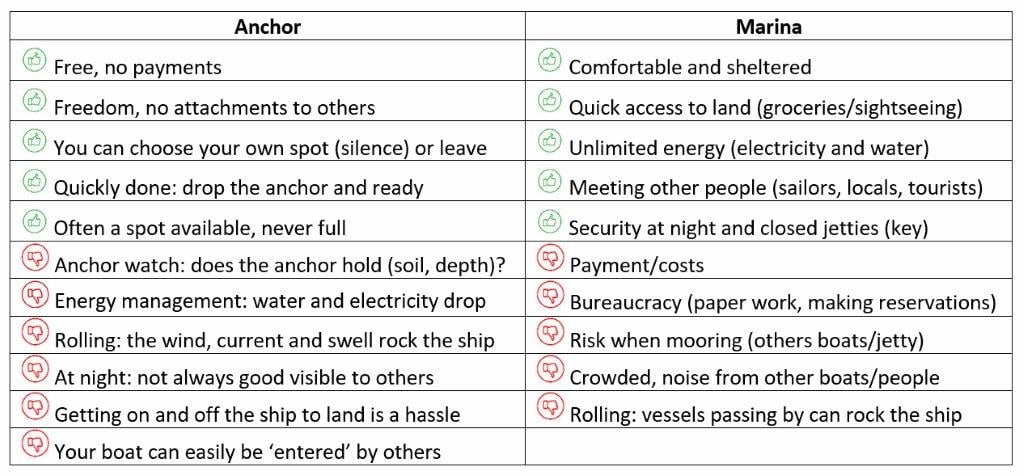
Conclusion for us: when it is comfortable and a nice sheltered area on sea, we choose anchoring. And when we like to do a lot of sightseeing with our bikes, need to do maintenance or the weather is not stable, we choose a marina.
8 catamarans in a row
One of the advantages of being in a marina, is that you get to meet a lot of people. In the harbor of Almerimar, we were nr 3 in a row of 8 boats, all catamarans! The brands were Lagoon, Fountaine Pajot and Bali. And 8 in a row was unique for us to experience. It’s a sign that we are really in the Mediterranean now, because together with the Caribbean sea, this is were most catamarans sail. And it’s often an international society of sailors. I walked along the ships and wrote down their 8 homeports:
Hamburg (Ger) – Roma (Ita) – Meerkerk (Holl) – Inverness (Scotland)
Styrsö (Sweden) – Portsmouth (UK) – Copenhagen (Den) – Berlin (Ger)
Most of the boats we saw so far, are from Europe, but sometimes we see a catamaran from Canada, the United States or even Sydney! It’s funny to see that there is a ritual that everyone starts in the local language to greet other people and seek contact (so in France it was ‘bonjour’ and here in Spain ‘buen día or hola’), but often you can hear by the accent with which they pronounce the greeting, what country they are really from!
Plastic Sea
With 320 days of sunshine along the coast of Almería, we were not surprised to learn that a lot of fruits and vegetables are grown here. For example tomatoes, peppers, cucumbers and melons, most of it is transported all over Europe. With water coming from the mountains, there is enough groundwater. But to shelter the crops from the hot sun and salty seawind, they are cultivated in greenhouses. So we began to see white and grey foils and buildings along the coastline. Not really pretty:

Since 1974 when the greenhouses started, it has grown to an incredible area of 115 km2 in 2022 (see blow), stretched over 10 municipalities. So for hours, we saw the shimmer from transparent plastic.
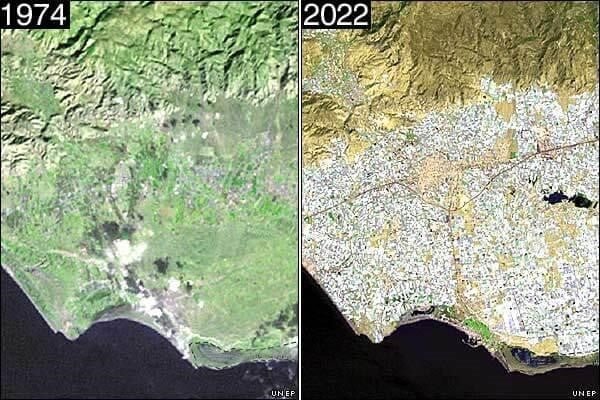
It’s the only manmade construction that can seen from space looking at the earth (see below). This area in the south of Spain is also called El Mar de Plástico, The Plastic Sea. A little bit different then what you would expect when you hear the term ‘plastic sea’, but this really exists here!
